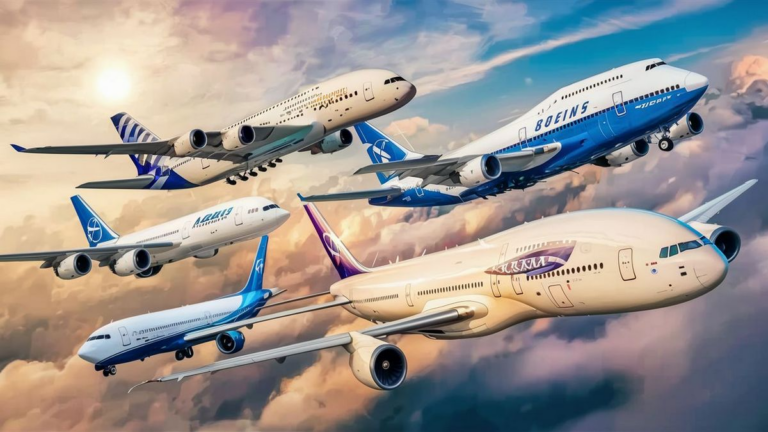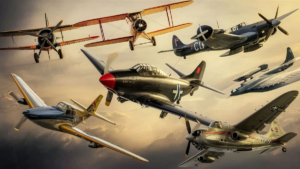When it comes to the marvels of modern engineering and aviation, the quest for the biggest passenger plane continues to captivate minds worldwide. As enthusiasts and travelers alike marvel at the sheer size and capabilities of these aerial behemoths, it’s essential to understand what defines the largest passenger aircraft and the technology behind their construction.
Understanding the Notion of Size in Aviation
In the realm of aviation, the term “biggest” encompasses various dimensions, including wingspan, length, height, and overall capacity. Passenger planes are typically evaluated based on their seating capacity and payload capabilities, among other factors.
The Airbus A380: Reigning Champion of Passenger Aircraft
Since its debut in 2005, the Airbus A380 has held the title as the largest passenger plane in the world. With its distinctive double-deck design and a capacity to accommodate over 800 passengers in a single-class configuration, the A380 remains a symbol of engineering prowess and innovation in the aviation industry.
The Boeing 747: A Legend in Commercial Aviation
Although the Airbus A380 currently holds the crown for the largest passenger aircraft, the Boeing 747, particularly the 747-8 model, remains a formidable contender in the realm of commercial aviation. With its iconic humpback design and spacious interior, the 747 series has long been synonymous with long-haul flights and transcontinental travel.
Comparing the Giants: A380 vs. 747
When comparing the Airbus A380 and the Boeing 747, several key differences emerge. While both aircraft boast impressive dimensions and passenger capacities, their designs and technological features set them apart.
| Aspect | Airbus A380 | Boeing 747-8 |
|---|---|---|
| Seating Capacity | Up to 853 passengers | Up to 467 passengers |
| Wingspan | 79.8 meters | 68.4 meters |
| Length | 72.7 meters | 76.3 meters |
| Height | 24.1 meters | 19.4 meters |
The Future of Passenger Aviation
As technology continues to evolve and demand for air travel grows, the quest for even larger and more efficient passenger aircraft persists. Manufacturers are exploring innovative designs and materials to enhance fuel efficiency, reduce emissions, and improve passenger comfort.
New Players on the Horizon
Beyond the A380 and 747, emerging contenders such as the Boeing 777X and the proposed Boeing NMA (New Midsize Airplane) aim to revolutionize the passenger aviation landscape with advanced features and enhanced capabilities.
Sustainability and Environmental Concerns
In addition to size and capacity, the aviation industry faces mounting pressure to address environmental concerns and adopt sustainable practices. Manufacturers and airlines are investing in research and development to create more eco-friendly aircraft and reduce the carbon footprint of air travel.
In the dynamic world of aviation, the question of what constitutes the biggest passenger plane remains a topic of fascination and debate. While the Airbus A380 currently holds the title for sheer size and capacity, the evolution of aviation technology ensures that new contenders will continue to emerge.
As travelers embark on journeys around the globe, the allure of flying aboard these engineering marvels serves as a testament to human ingenuity and the boundless possibilities of flight.
Exploring Passenger Comfort and Amenities
While size and capacity are crucial factors in defining the biggest passenger plane, passenger comfort and amenities also play a significant role in enhancing the flying experience. Modern aircraft feature advanced cabin designs, entertainment systems, and ergonomic seating arrangements to ensure a pleasant journey for travelers.
Innovations in Cabin Design
Leading aircraft manufacturers continuously innovate in cabin design to maximize space utilization and passenger comfort. This includes the use of lightweight materials, customizable seating configurations, and ambient lighting to create a welcoming atmosphere onboard.
Entertainment and Connectivity
Today’s passengers expect seamless connectivity and entertainment options during their flights. Airlines invest in high-speed Wi-Fi, on-demand entertainment systems, and connectivity hubs to keep passengers entertained and productive throughout their journey.
| Feature | Description |
|---|---|
| Wi-Fi Connectivity | High-speed internet access for passengers to stay connected during the flight. |
| On-Demand Entertainment | Wide selection of movies, TV shows, music, and games available on individual screens. |
| Comfortable Seating | Ergonomically designed seats with adjustable features to enhance passenger comfort. |
Frequently Asked Questions
- Q: How do aircraft manufacturers ensure safety in large passenger planes?
- A: Aircraft manufacturers adhere to stringent safety standards set by aviation regulatory bodies. They conduct rigorous testing, implement redundant systems, and incorporate advanced safety features to mitigate risks and ensure passenger safety.
- Q: What role does fuel efficiency play in the design of large passenger aircraft?
- A: Fuel efficiency is a critical consideration in aircraft design to reduce operating costs and minimize environmental impact. Manufacturers employ aerodynamic enhancements, lightweight materials, and efficient engines to improve fuel efficiency and reduce carbon emissions.
- Q: Are there any upcoming developments in supersonic passenger travel?
- A: Several companies are exploring the feasibility of supersonic passenger travel, aiming to reduce travel times significantly. However, challenges such as noise pollution, regulatory approvals, and high development costs pose hurdles to widespread adoption.
See also:






